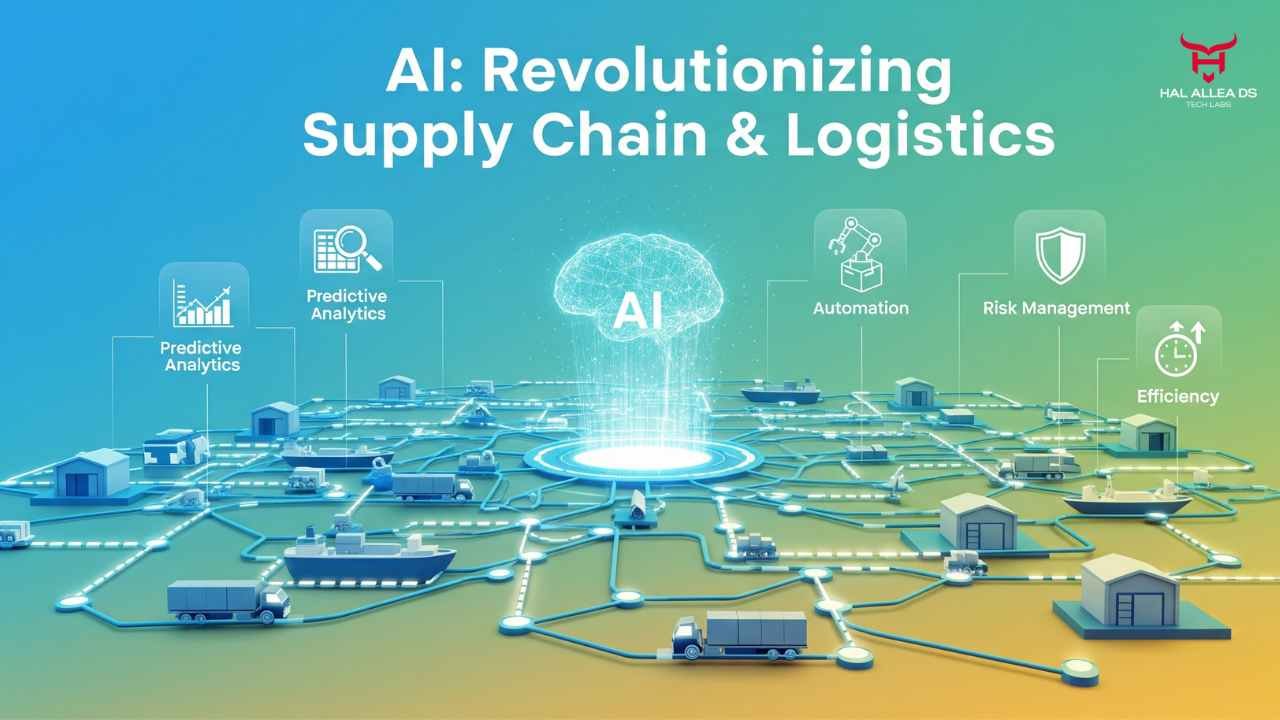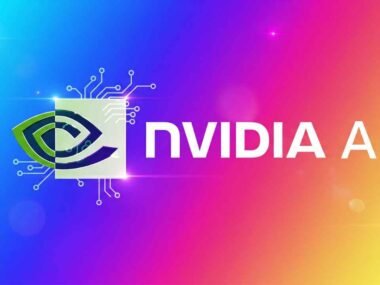Here’s the thing – we’re not just witnessing gradual improvements in supply chain management anymore. We’re in the middle of a full-blown AI revolution. According to recent studies, 73% of supply chain companies now use artificial intelligence in some form, and honestly? The results speak for themselves. Early adopters are seeing logistics costs drop by 15% and inventory levels reduced by a remarkable 35%.
But let’s be real about who this transformation is really affecting. Small business owners who’ve been drowning in manual inventory tracking, supply chain managers struggling to predict demand spikes, and logistics directors trying to coordinate thousands of shipments across multiple channels – these are the people finding real relief through AI-powered solutions. The technology isn’t just changing how we manage supply chains; it’s fundamentally reshaping what’s possible in global trade and commerce.
The Numbers Don’t Lie: AI’s Supply Chain Impact
Now, this is where it gets interesting – the data behind this AI revolution is staggering. The global AI in supply chain market exploded from $7.15 billion in 2024 to an estimated $9.94 billion in 2025, and sources suggest it’ll reach approximately $192.51 billion by 2034. That’s a 39% compound annual growth rate, which honestly makes this one of the fastest-growing enterprise technology sectors.
Here’s what’s really driving this growth: companies are achieving an 82% adoption rate of AI-driven quality control systems, resulting in an 18% reduction in product defects. That said, the real game-changer is in demand forecasting accuracy. Industry data indicates that AI algorithms are improving forecast precision from traditional levels of 67% to over 92% at the SKU-location level.
But what I find most compelling is how this translates to real business outcomes. Organizations report a 65% improvement in service levels using AI solutions, while simultaneously reducing inventory carrying costs. The AI in logistics market specifically has grown to $20.8 billion in 2025, representing a staggering 45.6% CAGR. These aren’t just incremental improvements – we’re talking about fundamental shifts in operational efficiency.
Five AI Tools Transforming Supply Chain Management

1. O9 Solutions – The Digital Brain Platform
O9 Solutions has built what they call the “Digital Brain” – an AI-powered integrated business planning platform that’s honestly pretty impressive. Their secret sauce is the Enterprise Knowledge Graph (EKG) that combines supply, demand, and financial data in real-time.
Key AI Features:
- Real-time scenario planning with automated decision-making.
- AI Agents that provide prescriptive intelligence.
- Digital twin technology for supply chain modeling.
- Cross-functional collaboration with integrated forecasting.
Pricing: Custom pricing based on enterprise complexity (typically six-figure implementations for large organizations)
Best Use Cases:
O9 really shines for multinational corporations with complex supply networks. Think companies like Microsoft, which uses their system to reduce fulfillment planning time from 4 days to 30 minutes while improving accuracy by 24%.
Real-World Implementation:
One of their retail clients achieved a 50% reduction in lead times across 500+ facilities while maintaining 99.7% fulfillment accuracy. The platform automatically allocates manufacturing capacity and adjusts distribution plans for over 120,000 SKUs daily.
Pros: Exceptional scenario planning capabilities, seamless integration across planning horizons.
Limitations: High implementation cost and complexity; requires experienced supply chain professionals.
2. Logility – The AI-First Planning Solution
Logility has positioned itself as the “AI-first” supply chain planning platform, and they’re backing that claim with some serious generative AI capabilities. Their platform serves major brands like Starbucks and Kraft Heinz.
Key AI Features:
- Advanced machine learning for demand sensing and forecasting.
- Generative AI for supply chain optimization.
- Automated inventory optimization algorithms.
- Predictive analytics for disruption management.
Pricing: Custom enterprise pricing (generally starts around $100K+ annually for mid-market implementations)
Best Use Cases:
Logility excels in retail, CPG, and food & beverage industries where demand volatility is high. Their industry-specific pre-configurations make implementation faster for companies in these verticals.
Real-World Implementation:
The platform reduces forecast error significantly and helps companies optimize stock levels while improving coordination across internal teams and external trading partners. Their native AI capabilities enable more accurate demand sensing compared to traditional statistical methods.
Pros: Strong industry-specific solutions, proven track record with major brands.
Limitations: Can be time-consuming to customize; premium pricing compared to basic SCM solutions.
3. Anaplan – The Connected Planning Platform
Anaplan takes a different approach with its cloud-based supply chain planning tool. What sets them apart is their real-time scenario modeling and collaborative planning capabilities across departments.
Key AI Features:
- AI-driven demand sensing with predictive modeling
- Real-time supply chain scenario planning
- Connected planning across sales, operations, and finance
- Advanced analytics for supply chain optimization
Pricing: Custom pricing available upon request (typically enterprise-level investments)
Best Use Cases:
Anaplan works particularly well for companies needing integrated business planning where supply chain decisions impact financial outcomes. Their platform models the entire supply chain from procurement to fulfillment.
Real-World Implementation:
Companies use Anaplan’s demand forecasting integration to align supply plans with sales forecasts, while scenario modeling helps optimize supply plans based on financial impact analysis. The platform’s inventory optimization aligns stock levels with expected demand while analyzing fulfillment costs.
Pros: Excellent cross-functional integration, powerful scenario planning.
Limitations: Requires expert configuration; more expensive than traditional supply chain software.
4. Rippey AI – The Automation Specialist
Here’s where things get practical – Rippey AI focuses specifically on automating the repetitive, manual tasks that bog down logistics operations. They’re not trying to do everything; they’re just really good at eliminating busywork.
Key AI Features:
- Conversational AI for customer service automation.
- Natural language processing for document handling.
- Machine learning for process optimization.
- Automated shipment creation and quote responses
Pricing: Subscription-based model starting around $500-2000/month, depending on automation complexity.
Best Use Cases:
Perfect for freight forwarders and 3PL providers drowning in manual quote requests and shipment processing. According to recent studies, only 31% of freight forwarders respond to quote requests, taking an average of 50 hours when they do.
Real-World Implementation:
Rippey’s automation tools can respond to logistics inquiries in seconds without human intervention. They’ve partnered with PayCargo to automate payment transactions, connecting AI with payable and receivable invoices to enhance efficiency.
Pros: Quick implementation, immediate ROI on task automation, affordable for smaller operations
Limitations: Limited to process automation; not a comprehensive supply chain planning solution.
5. Pickrr – The E-commerce Logistics Optimizer
Pickrr has carved out a niche in AI-powered logistics for e-commerce and D2C brands. What I like about their approach is how they tackle specific pain points like return-to-origin (RTO) issues that plague online retailers.
Key AI Features:
- Calcula AI engine for intelligent carrier selection.
- Predictive analytics for RTO reduction.
- Machine learning for delivery optimization.
- AI-driven inventory management recommendations.
Pricing: Pay-per-shipment model with no monthly minimums (typically $0.50-2.00 per shipment depending on services).
Best Use Cases:
Ideal for e-commerce businesses struggling with high RTO rates and delivery optimization. Their AI analyzes over 50 parameters to select the best courier partner for each shipment.
Real-World Implementation:
Pickrr has helped reduce RTO challenges by 3-4% and logistics costs by 20-30% for their customers. Their AI system recommends area-specific offers for regions with low sales volume and provides marketing insights for better market penetration.
Pros: E-commerce-specific features, pay-as-you-go pricing model, strong RTO reduction capabilities.
Limitations: Primarily focused on the Indian market; limited global carrier network.
Implementation Strategy: Getting Started with AI Supply Chain Tools
So you’re convinced AI can transform your supply chain operations – but where do you actually start? That said, I’ve seen too many companies jump in without a clear strategy and end up with expensive software they can’t properly utilize.
Choosing the Right AI Tool:
Start by honestly assessing your biggest pain points. Are you struggling with demand forecasting accuracy? Go with something like O9 or Logility. Drowning in manual processes? Rippey AI might be your best bet. Need better e-commerce logistics? Consider Pickrr.
Here’s what most people don’t realize – the technology is only as good as your data quality. Before implementing any AI solution, ensure you have clean, accessible data from your current systems. I recommend starting with a pilot project in one business unit or product line rather than trying to transform everything at once.
Integration Considerations:
The truth is, most AI tools require significant integration work with existing ERP systems, warehouse management systems, and transportation management platforms. Budget for 3-6 months of integration time and expect some operational disruption during the transition.
Common Setup Mistakes to Avoid:
- Trying to automate broken processes instead of fixing them first.
- Underestimating change management requirements for your team.
- Not establishing clear success metrics before implementation.
- Choosing tools based on features rather than specific business needs.
Timeline Expectations:
Honestly, expect 6-12 months before seeing significant ROI from comprehensive AI implementations. Simple automation tools like Rippey might show benefits within weeks, but complex planning platforms require time for machine learning algorithms to optimize based on your specific data patterns.
Budget Planning Tips:
Most enterprise AI tools require substantial upfront investments – often $100K+ annually. However, consider the hidden costs: data integration, training, ongoing support, and potential system upgrades. Plan for 20-30% above the quoted software costs to cover these extras.
Measuring Success: KPIs That Actually Matter
Now, this is where it gets interesting – measuring AI success in supply chain management isn’t just about cost savings. You need to track metrics that reflect the technology’s impact on your entire operation.
Key Metrics to Track:
- Forecast accuracy improvement (aim for 15-25% improvement within the first year).
- Inventory turnover rates and carrying cost reductions.
- Order fulfillment accuracy and speed.
- Supply chain visibility and disruption response time.
- Customer satisfaction scores related to delivery performance.
ROI Calculation Methods:
I think the most honest approach is to establish baseline measurements before implementation and track improvements quarterly. Factor in both hard savings (reduced inventory costs, fewer stockouts) and soft benefits (improved customer satisfaction, better decision-making speed).
Using AI-driven analytics, companies typically see ROI within 12-18 months for comprehensive implementations. However, process automation tools often show positive returns within 3-6 months.
When to Scale or Switch Tools:
If you’re not seeing measurable improvements within the expected timeframe, don’t be afraid to reassess. Sometimes the issue isn’t the technology – it might be data quality, user adoption, or misaligned expectations.
Long-term Optimization Strategies:
The real value comes from continuous improvement. AI algorithms get better with more data, so establish processes for regular model updates and performance optimization. Plan for annual reviews of your AI strategy and be prepared to add new capabilities as your supply chain matures.
The Future is Already Here
The AI revolution in supply chain management isn’t coming – it’s happening right now. Companies that embrace these technologies are seeing dramatic improvements in efficiency, cost reduction, and customer satisfaction. Those who wait? Well, they’re going to find themselves competing with organizations that can predict demand with 92% accuracy, automate routine decisions in real-time, and respond to disruptions in hours instead of days.
The transformation potential is massive, but success requires thoughtful implementation, realistic expectations, and a commitment to continuous improvement. Start with one tool that addresses your biggest pain point, measure results carefully, and gradually build your automated supply chain stack. The technology is ready – the question is whether you are.












